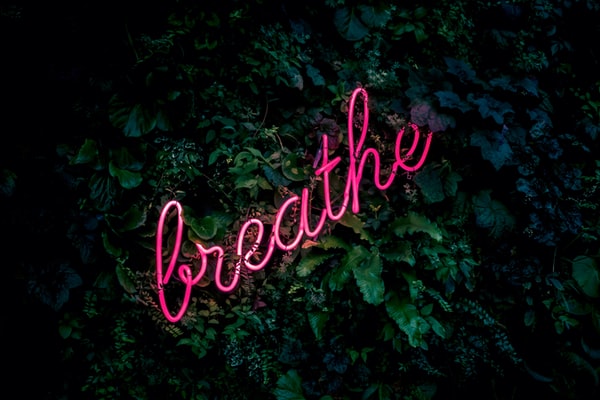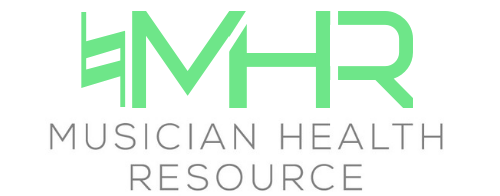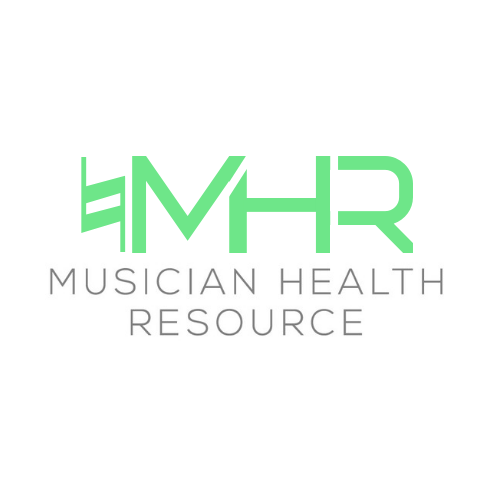
When we're stressed, our muscles tighten. This causes our respiratory system to restrict and we begin to breathe faster and shorter. When our breathing restricts and we begin to breathe faster and shorter, our muscles receive less blood-flow and, as a result, less oxygen. Less blood-flow and oxygen causes our muscles to tighten and our bodies to react as stressed.
Notice the cycle?
We're trapped! As a musician, our craft depends on our muscle mobility and, if you're a vocalist or wind or brass player, it also depends on your breath.
Proper breathing is essential to a musician's ability to perform their craft but it isn't taught at all in beginning string pedagogy. In wind and brass techniques, proper breathing might not even be addressed until well after a young player has developed breathing habits.
Many players, and people in general, breathe from the upper chest, shoulders and neck muscles. The lungs are, after all, the place where oxygen intake is stored and transferred to the bloodstream. But the lungs themselves should be dependent on a larger muscle - the diaphragm.
The diaphragm is one of the rare muscles in our body that works both as a skeletal (voluntary) muscle and smooth (involuntary) muscle. Which means that like all skeletal muscles, it will weaken when not used. A newborn baby has no problem engaging it's diaphragm to call for it's mom but as children grow and transition to school desks and slouching, the muscle becomes compressed and breathing often shifts to smaller, upper-body muscles.

That's because the diaphragm is located underneath our lungs (green line above), with the other muscles of our "core". As we breathe in, the diaphragm moves down allowing the lungs to expand and, in order to breathe out, the diaphragm ought to contract to push the air back out of the body. This is important to note: The diaphragm ought to be responsible for pushing the air out of the body, not merely relaxing as air exits the body.
A quick way to locate your diaphragm is to pant like a dog or shout "hey". You'll immediately feel the muscles in your core contract as they push the air out of your lungs. These are also the same muscles that engage when you need to go to the bathroom or cough.
It may seem simple but, like all unused muscles, getting the diaphragm to re-engage after prolonged periods of no usage, is not an easy task. Just ask the me of two years ago who cried in frustration in the middle of physical therapy over a continuing inability to adapt proper breathing techniques. For me, it was just another day as an artist but I think my physical therapist might have some emotional scarring from it...
The more I'm told to "relax and just breathe", the more stressed I become that I can't seem to "relax and just breathe". I, once again, trap myself in the same vicious cycle even though I know deep breathing sends messages to my brain to calm down and relax.
So how can we break the cycle?
By implementing these six breathing exercises you can begin to decrease stress levels and increase your diaphragmatic strength.
Equal Breathing
- Sit in a comfortable position with a straight spine.
- Inhale through the nose as you count to four.
- Exhale through the nose as you count to four.
- As you feel comfortable, increase the number you count to.
- Notice how you feel afterward.
Belly Breathing
- Lie down with one hand on your stomach and one hand on your chest.
- Breathe in through your nose and let your belly push your hand up. The hand on your chest should remain still.
- Breathe out through your mouth with pursed lips and feel your belly sink down as you push out all the air.
- Repeat the exercise three to ten times.
- Notice how you feel afterward.
4-7-8 Breathing
(This is one of my favorite breathing techniques for falling asleep and calming a restless mind.)
- Lie down with one hand on your stomach and one hand on your chest.
- Count to four as you inhale from the stomach, pushing up your hand. The hand on your chest should remain still.
- Hold your breath as you count to seven.
- Exhale fully as you count to eight, completely emptying your body of air.
- Repeat as many times as needed to feel calm and notice how you feel afterward. (Or fall asleep.)
Breath Counting
- Sit in a comfortable position with a straight spine.
- Breath in deeply.
- On the exhale, count to one.
- Breath in deeply and, on the exhale, count to two.
- Repeat the counting process up to five, then start over again.
- Only count on the exhales.
- Notice how you feel afterward.
Alternate Nostril Breathing
(This is an exercise that wakes up the body and, although focusing, I don't suggest it before sleeping.)
- Sit in a comfortable position with a straight spine.
- Using the thumb of your right hand, cover the right nostril and breathe in deeply through the left nostril.
- Use your ring finger to cover the left nostril and breathe out through the right nostril.
- Breathe in deeply through the right nostril while the left remains covered.
- Cover the right nostril with the thumb and breathe out through the left nostril.
- Breathe in through the left nostril and repeat the pattern.
- Notice how you feel afterward.
Morning Breathing
(Ideal for practicing the moment you get out of bed.)
- Stand up straight with knees slightly bent.
- Bend forward, hinging at the waist, and allow your arms to dangle towards the floor.
- Take a deep breath in, filling up the lower back body and roll, one vertebrae at a time, up to the head.
- On the exhale, hinge forward at the waist again.
- Repeat as necessary until your body is warmed up with less morning stiffness.
- Notice how you feel afterward.
Like any new exercise, diaphragmatic breathing can be discouraging for both the muscle strength and the mind strength required. It's the best way, however, to calm and control your body in stressful situations and leads to better sleep, better practice, better performance, better digestion and better mental clarity. (That's a lot of places for improvement!)
Be sure to check the blog again on Thursday for my interview with Lauren Wasynczuk. Lauren is a saxophonist, conductor and music educator who spent a large portion of her graduate studies focused on breathing techniques. She carries this knowledge with her into her current work in music education and will be sharing with us what can be gained by being a present performer and how the breath is a necessary tool in recognizing where you are.
Any athlete knows the importance of mental focus and the benefits of good breathing for good blood-flow to necessary muscles. Our bodies should never limit our art so learn how to train like an athlete to play like a musician.
Health and happiness,
Karen





One of the main triggers to reach a flow state is your breath. A breath practice will allow you to reach full concentration, helping you to enter the flow state. C Wilson Meloncelli offers a breathing in flow program which can help you to hack flow state. The Breathing In Flow course (https://www.cwilsonmeloncelli.com/breathing-in-flow/) is a step-by-step program containing a set of meditations and physical exercises to help you tune into your subconscious and get into the flow state.